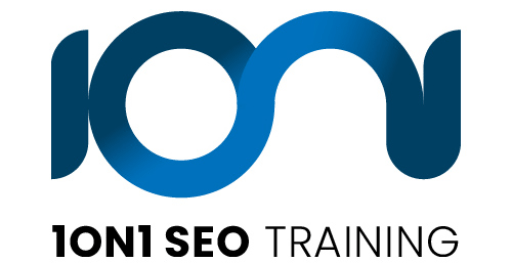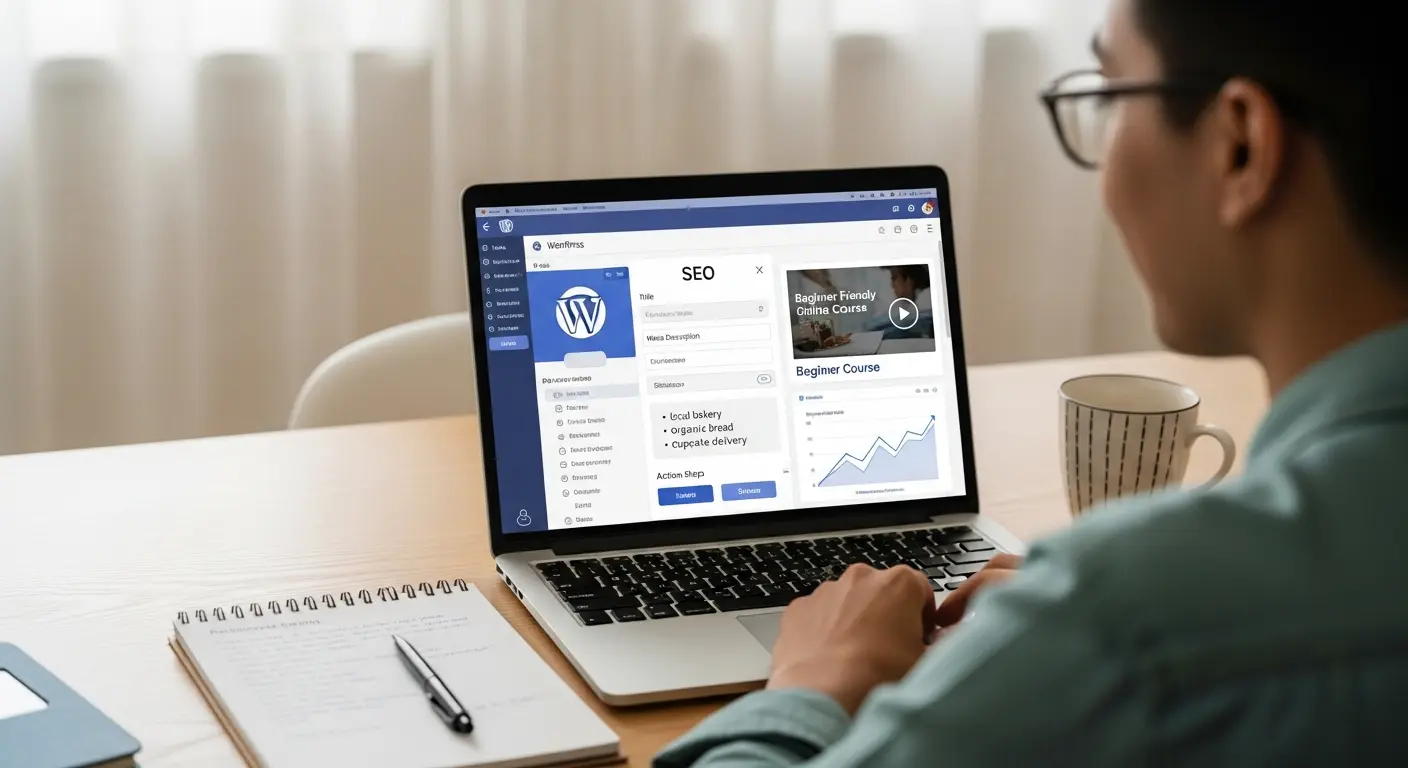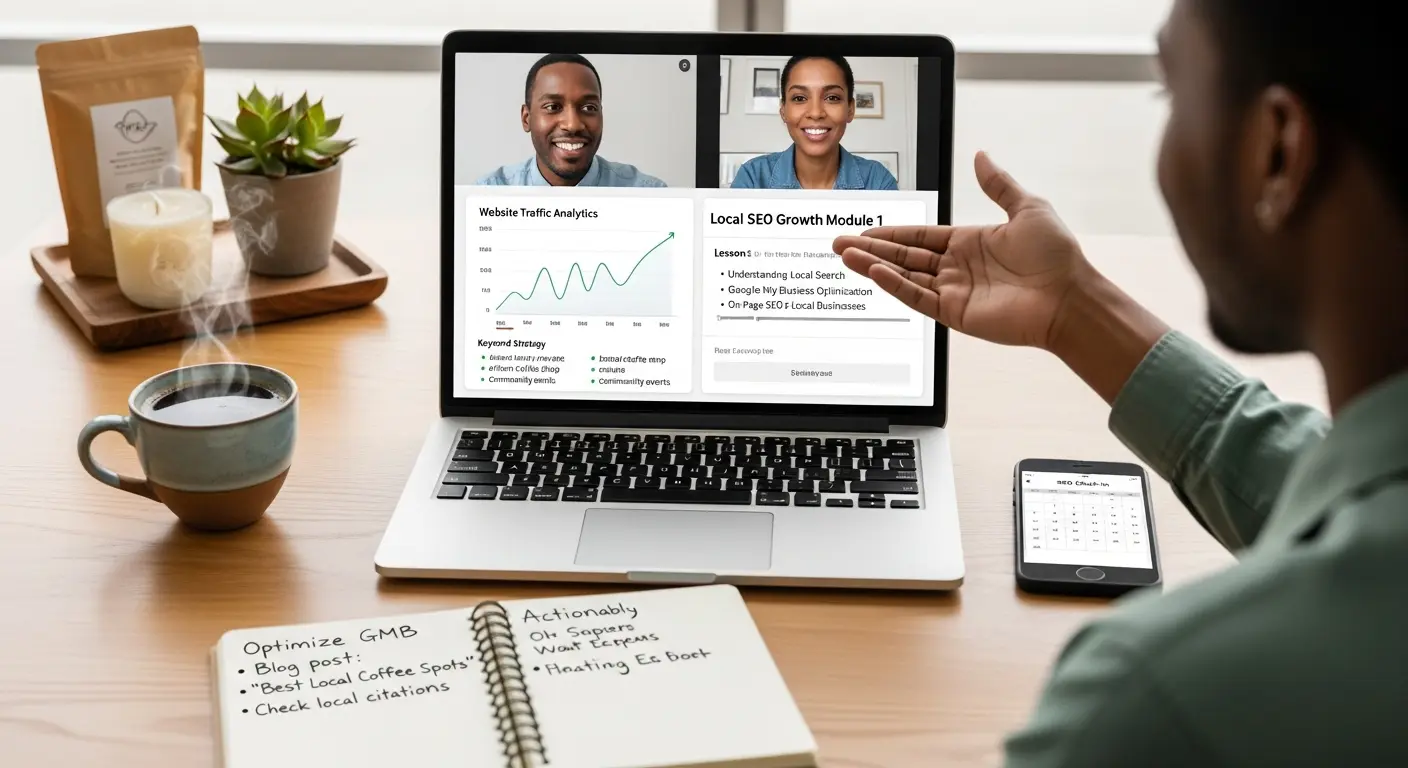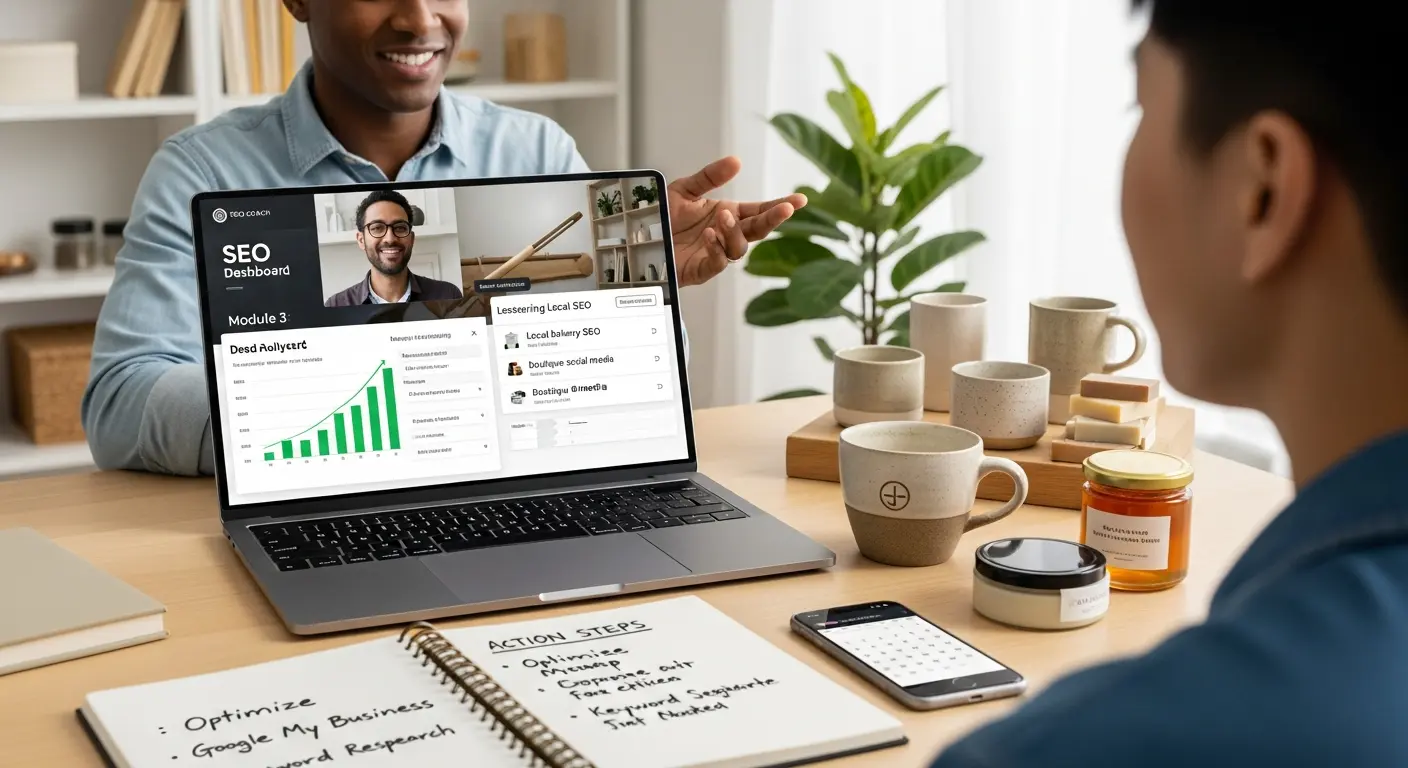A Beginner Friendly Guide
Search engine optimisation can feel confusing when you are new to it. Many beginners think they need to be technical, learn coding, or understand complex tools before improving their website. The truth is that anyone can learn SEO, even without a technical background. You simply need the right steps, the right strategy, and a clear explanation. That is exactly what this guide is for.
This WordPress SEO tutorial is written for non-technical users who want to learn SEO in a simple and friendly way. The goal is to help you understand what matters, what to ignore, and how to improve your website by making small but meaningful changes. You will not find complicated jargon here. Instead, you will get clear instructions that you can follow at your own pace.
Let us walk through everything step by step so you can start ranking higher on Google.
Why WordPress Is a Great Platform for SEO
WordPress is one of the most popular website platforms in the world. One reason is that it is naturally SEO friendly. Even if you have no experience with optimisation, WordPress gives you the tools you need to make your website search engine-friendly.
1. It Is Beginner Friendly
You can build posts, edit pages, upload images, and adjust settings without coding. This is why so many beginners search for a WordPress SEO tutorial when starting their website.
2. SEO Friendly Structure
WordPress uses clean coding practices that make it easier for search engines to crawl your website.
3. Easy Access to Plugins
SEO plugins help you manage titles, descriptions, meta tags, and more. You do not need advanced skills to use them.
4. Mobile Ready Themes
Most themes are already optimised for phones, tablets, and desktops. This helps improve rankings.
5. Strong Community Support
There are thousands of guides, videos, and resources available. You will always find help when you need it.
These advantages make WordPress a strong foundation for learning SEO. Now let us move deeper into this WordPress SEO tutorial and start with the first step.
Step 1: Choose an SEO Friendly Theme
Your theme is important. It affects the design, performance, speed, and mobile experience of your website. A slow or poorly coded theme can hurt your rankings even if you create great content.
What to Look For in a Good Theme
Fast Performance
Choose a lightweight theme that loads quickly. Speed is an important ranking factor.
Mobile Responsiveness
Your site should adjust smoothly to different screen sizes.
Clean Coding
A theme with clean coding reduces errors and improves crawling.
Regular Updates
Themes that are regularly updated are more secure and compatible with new versions of WordPress.
Some reliable themes include Astra, Kadence, GeneratePress, and Neve. Choosing the right theme is one of the first steps in this WordPress SEO tutorial because it creates the base for everything else.
Step 2: Install an SEO Plugin
SEO plugins make optimisation easier for beginners. They guide you through the process and help you make smart decisions.
Recommended Plugins
Yoast SEO
Great for beginners. Shows green and red indicators to help you optimise your content.
Rank Math
More advanced features, but still easy to use.
You only need one plugin. Installing more than one can cause conflicts. Your SEO plugin will be your main partner while using this WordPress SEO tutorial , so choose one that feels comfortable for you.
Step 3: Fix Your Important SEO Settings
Before you publish content, you should adjust a few important settings inside WordPress. These settings help search engines understand your site better.
1. Check Your Site Visibility
Go to Settings → Reading.
Make sure “Discourage search engines from indexing this site” is not checked.
2. Update Your Permalink Structure
Go to Settings → Permalinks → Choose “Post Name.”
This gives your URLs a clean and SEO friendly format.
3. Connect to Google Search Console
Search Console shows your rankings, your performance, your errors, and your keyword data.
4. Submit Your Sitemap
Your SEO plugin creates a sitemap automatically. Submit it to Google Search Console so Google can crawl your pages faster.
These steps help search engines understand your content, making the next parts of this wordpress seo tutorial more effective.
Step 4: Learn Keyword Research the Simple Way
Keyword research is about understanding what your audience is searching for. Many beginners skip this step because it sounds complicated, but it is not as difficult as it seems.
Free Tools You Can Use
- Google Keyword Planner
- Google Search autocomplete
- Google Trends
- AnswerThePublic
- Ubersuggest (free version)
Qualities of a Good Keyword
- People are actively searching for it
- It is relevant to your topic
- It matches what your audience wants
- It is not extremely competitive
- It has clear search intent
For example, instead of a broad keyword like “shoes,” you could target “best running shoes for flat feet.” This simple approach is used throughout this wordpress seo tutorial because specific keywords help you rank faster.
Step 5: Improve Your On-Page SEO
On-page SEO refers to everything you do inside your content. It allows Google to understand what your page is about. A few simple tweaks can improve your rankings significantly.
Essential On-Page SEO Tips
1. Add Your Keyword in the Title
Keep it near the beginning.
2. Mention Your Keyword in the First Paragraph
This helps Google understand your topic early.
3. Use Headings to Organise Your Content
Use H2 and H3 tags to separate sections.
4. Add Alt Text to Images
This describes your images to search engines.
5. Write a Clear Meta Description
This description appears in search results and encourages people to click.
6. Use Internal Links
Link to other helpful pages on your website.
7. Use External Links When Needed
Link to trusted sources when supporting your information.
Good on-page SEO is one of the most important parts of this WordPress SEO tutorial because it directly affects your rankings.
Step 6: Improve Your Website Speed
Speed matters to both Google and your visitors. A slow site leads to higher bounce rates and lower rankings.
Here are simple ways to improve your speed:
1. Use a Caching Plugin
It stores a lighter version of your site and helps pages load faster.
2. Compress Your Images
Large images slow down your website. Use tools like TinyPNG or ShortPixel.
3. Remove Unnecessary Plugins
Every plugin uses resources. Keep only the ones you need.
4. Use a Fast Hosting Provider
Your hosting impacts your performance more than you might think.
5. Enable Lazy Loading
Images load only when the user scrolls to them, which helps speed.
Speed optimisation is a core part of this WordPress SEO tutorial because fast websites perform better in search rankings.
Step 7: Ensure Your Website Is Mobile Friendly
Google ranks mobile versions of websites first. This means your website should look good and function well on phones and tablets.
Mobile Optimisation Tips
- Choose a responsive theme
- Use large, readable fonts
- Avoid small buttons
- Remove clutter
- Keep forms simple
- Test your site using Google’s Mobile Friendly Test
Mobile friendliness is a major topic in this WordPress SEO tutorial because more than half of all website traffic comes from mobile users.
Step 8: Create High Quality Content
High-quality content is the heart of SEO. Even if your technical setup is perfect, your website will not rank without helpful content.
Tips for Writing High Quality Content
- Answer real questions
- Use simple and clear wording
- Break up long paragraphs
- Organise your content with headings
- Add examples
- Stay focused on your topic
- Use visuals when needed
Content That Performs Well
- Step-by-step guides
- Tutorials
- Lists
- Case studies
- How-to articles
- Beginner-friendly explanations
This WordPress SEO tutorial encourages you to write content that helps people, not just content that targets keywords.
Step 9: Build Backlinks Naturally
Backlinks show Google that your website is trustworthy. You do not need advanced strategies to get them.
Simple Ways to Get Backlinks
- Share your content in communities
- Write guest posts
- Create detailed guides
- Join industry forums
- Build relationships with creators
- Write content people want to reference
Over time, good content naturally attracts links. That is why backlink building is included in this WordPress SEO tutorial as a long-term strategy.
Step 10: Track Your SEO Results
Tracking is important because it helps you improve. Without tracking, you will not know what is working.
Tools to Use
- Google Search Console
- Google Analytics
- Your SEO plugin dashboard
Metrics to Check
- Keyword positions
- Click-through rates
- Traffic growth
- Top ranking pages
- Search queries
- Mobile usability issues
Tracking is a habit that every website owner should develop. It is also one of the most useful parts of this WordPress SEO tutorial because it teaches you what to improve next.
Step 11: Update Older Content Regularly
Google prefers fresh content. Updating old posts is an easy way to boost your rankings.
Ways to Improve Old Content
- Add new information
- Update old facts
- Add more internal links
- Improve readability
- Add images
- Rewrite unclear sections
Refreshing your old posts helps you stay competitive. This WordPress SEO tutorial encourages consistent updates so your website stays relevant.
Step 12: Improve User Experience
User experience affects how long visitors stay on your website. If people enjoy your content and spend more time reading it, Google sees that as a positive sign.
Simple Ways to Improve UX
- Use clean layouts
- Avoid cluttered pages
- Keep navigation clear
- Use readable fonts
- Avoid intrusive popups
- Break up text into smaller sections
Better user experience improves SEO naturally, which is why it is included in this WordPress SEO tutorial.
Step 13: Use Internal Linking the Right Way
Internal links help users find more content. They also help Google understand your website structure.
Best Practices
- Link to relevant pages
- Use natural anchor text
- Do not overuse the same link
- Update links when you publish new content
Internal linking is simple but powerful. It is one of the easiest parts of this WordPress SEO tutorial and something every site owner can do.
Step 14: Avoid Common SEO Mistakes
Beginners often make mistakes that slow down their progress. Here are the most common ones:
- Stuffing keywords
- Ignoring mobile optimisation
- Using slow themes
- Forgetting image alt text
- Not updating content
- Installing too many plugins
- Publishing thin content
Avoiding these mistakes will help you grow faster. This WordPress SEO tutorial highlights them so you can save time and avoid frustration.
FAQ
Below are beginner-friendly answers to common questions. Some include the keyword naturally to meet your SEO requirements.
1. What is a WordPress SEO tutorial ?
It is a beginner-friendly guide that explains how to optimise a WordPress website without technical skills.
2. Do I need an SEO plugin to follow this WordPress SEO tutorial ?
Yes. A plugin helps with titles, descriptions, sitemaps, and more.
3. Is WordPress good for beginners who want to learn SEO?
Yes. It is one of the easiest platforms for non-technical users.
4. How long does SEO take?
It depends on your content, competition, and consistency. Most websites see improvement within a few months.
5. What type of content ranks best?
Helpful, detailed, and well-structured content ranks best.
6. Will this wordpress seo tutorial help me even if I am not technical?
Yes. Every step is designed for beginners.
7. How often should I update my posts?
Every few months is ideal.
8. Does website speed affect SEO?
Yes. Faster websites rank better and keep visitors longer.
9. How can I see if my SEO is improving?
Check your Google Search Console and Analytics data.
10. Is WordPress better for SEO than other platforms?
Many experts believe so because it gives you more control and flexibility.
Final Thoughts
This WordPress SEO tutorial was created for non-technical users who want clear steps they can follow. SEO does not need to feel overwhelming. If you take things slowly and apply one step at a time, your website will get stronger, faster, and more visible in search results. The key is consistency, patience, and learning the basics.




